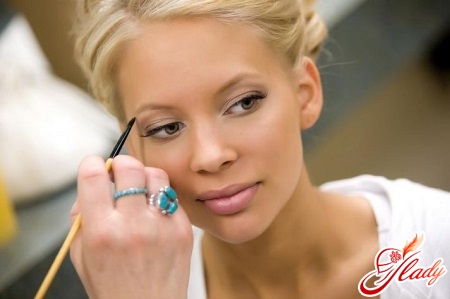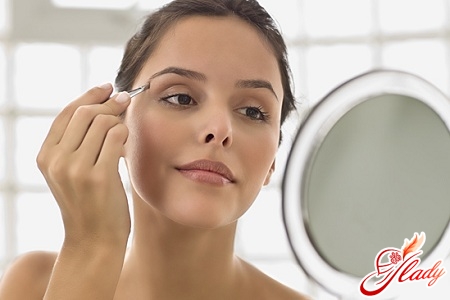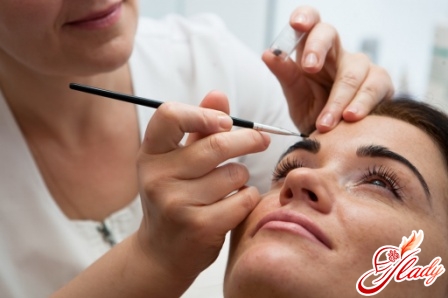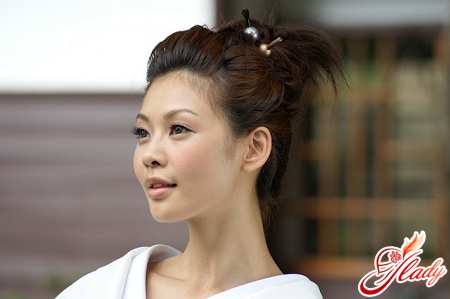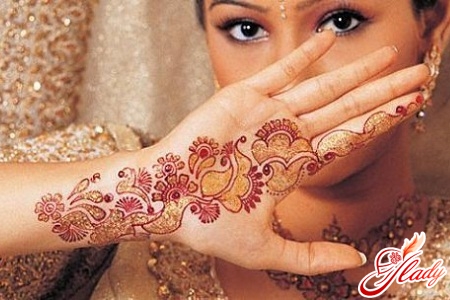 Henna has been known to the world for more than 8,000 years.Even Cleopatra used this unusual plant for treatment and cosmetic purposes, but even today this product does not lose its popularity. Henna is used for hair coloring, both in pure form and in a mixture with other dyes. It perfectly paints over gray hair, strengthens hair and makes it shiny, giving it a beautiful, rich red color. Henna drawings were and remain popular. In the East, the tradition of body painting has existed for about 5 thousand years. Women of Ancient Egypt made tattoos on a certain part of the face and chin, and men applied an image of a hoopoe to their temples. And the inhabitants of Central Asian countries have been using henna for a long time to apply drawings to the entire body. Such drawings are called mehndi, and they often have religious motives and were associated with rituals, traditions and ceremonies. At the wedding, the bride was painted with intricate patterns using henna, and the powder that remained after application was buried in the ground. Thus, according to legend, marriage was protected from the infidelity of the spouse and a quick breakup. And the women of Morocco during pregnancy applied henna patterns to their ankles so that the future child would not be jinxed. Each of the nations tried to change the color of such a "tattoo" in its own way. For example, Indian women added a tea solution to henna powder, and African women first fumigated the place where the pattern was applied with smoke from logs. In the East, even now there are special beauty salons where artists-painters work until late at night, creating unrivaled masterpieces on the bodies of their clients, although recently this is just a fashion trend. However, you can find such masters in Russia, now it is not difficult. The cost of such a tattoo varies greatly. Everything depends on the skill level of the artist, the size of the drawing, the complexity of the pattern and even the paint and color. The simplest design on a palm the size of a "glove" usually costs 400-600 rubles, more complex designs can cost from 1,500 to 5,000 rubles. The quality of the paint and additives (if you decide to change the color of the design), as well as the method of applying henna, play an important role in the cost of the work. Choosing your own picture for application is not difficult at all. Almost any good master can offer you their sketches or make a preliminary sketch. In addition, there are many different pictures and photos of henna designs on the Internet, so choosing something to your taste will not be difficult.
Henna has been known to the world for more than 8,000 years.Even Cleopatra used this unusual plant for treatment and cosmetic purposes, but even today this product does not lose its popularity. Henna is used for hair coloring, both in pure form and in a mixture with other dyes. It perfectly paints over gray hair, strengthens hair and makes it shiny, giving it a beautiful, rich red color. Henna drawings were and remain popular. In the East, the tradition of body painting has existed for about 5 thousand years. Women of Ancient Egypt made tattoos on a certain part of the face and chin, and men applied an image of a hoopoe to their temples. And the inhabitants of Central Asian countries have been using henna for a long time to apply drawings to the entire body. Such drawings are called mehndi, and they often have religious motives and were associated with rituals, traditions and ceremonies. At the wedding, the bride was painted with intricate patterns using henna, and the powder that remained after application was buried in the ground. Thus, according to legend, marriage was protected from the infidelity of the spouse and a quick breakup. And the women of Morocco during pregnancy applied henna patterns to their ankles so that the future child would not be jinxed. Each of the nations tried to change the color of such a "tattoo" in its own way. For example, Indian women added a tea solution to henna powder, and African women first fumigated the place where the pattern was applied with smoke from logs. In the East, even now there are special beauty salons where artists-painters work until late at night, creating unrivaled masterpieces on the bodies of their clients, although recently this is just a fashion trend. However, you can find such masters in Russia, now it is not difficult. The cost of such a tattoo varies greatly. Everything depends on the skill level of the artist, the size of the drawing, the complexity of the pattern and even the paint and color. The simplest design on a palm the size of a "glove" usually costs 400-600 rubles, more complex designs can cost from 1,500 to 5,000 rubles. The quality of the paint and additives (if you decide to change the color of the design), as well as the method of applying henna, play an important role in the cost of the work. Choosing your own picture for application is not difficult at all. Almost any good master can offer you their sketches or make a preliminary sketch. In addition, there are many different pictures and photos of henna designs on the Internet, so choosing something to your taste will not be difficult.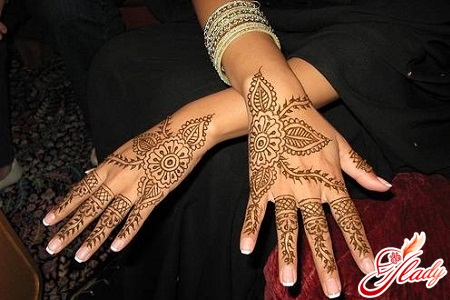
How is henna made at home?
First of all, you need to prepare everything for henna drawing on your body. You will need:
- Capacity for stirring henna;
- Spoon or wand;
- Syringe;
- Scissors;
- Film;
- Henna;
- Lemon juice;
- Eucalyptus oil;
Pour warm (not boiling) water over the henna powder andadd a few drops of lemon juice to it. Bring the mass to a uniform consistency and let it sit for a while. While the mixture is infusing, treat the area where the drawing will be applied with eucalyptus oil. It would be good to exfoliate this area of the skin with soft products that will not scratch the skin too much, but will exfoliate the upper keratinized layer well. This will enhance the intensity of the color of the future tattoo and open the pores of the skin. The fact is that eucalyptus oil helps to slow down the drying of henna, which means that the paint acts on the skin longer and penetrates deeper. But do not use more than 3 drops of oil, so as not to cause irritation. If you have sensitive skin, it is better to first test for an allergic reaction on the bend of the elbow. To do this, just apply a few drops to the skin and leave overnight. If redness appears, then you should not use oil. Draw the desired pattern on the film with a felt-tip pen and apply it to the skin so that the pattern is imprinted. Fill the syringe with paint and carefully outline the resulting sketch with henna. It is best to repeat this procedure 2 times with a difference of 1 hour, so that the color of the tattoo is deeper. After the drawing is ready, it is necessary to let it dry. Ideally, drying should take at least 1 hour. If you dry such a tattoo for less time, the pattern will be very pale and will quickly disappear. Dry the drawing in a warm place, to give additional brightness to the mehndi, you can periodically moisten the paint with lemon juice with added sugar (1:2). Just do not overdo it, otherwise you risk smudging the pattern. If you decide to make henna designs at home on a fairly large area of the body, additional measures will be needed. Boil half a liter of water, add 2 teaspoons of black tea or natural coffee (ground) and cook the mixture over low heat for an hour. Strain the resulting infusion. While the tea is boiling, you can prepare the henna for the procedure. Please note that for the designs you need henna, which is intended for body painting. It is made from the top leaves of the bush, which have high coloring properties. Rub 40-50 g of powder through a sieve. Gradually pour hot broth into the resulting dust, achieving the consistency of sugar icing. The main thing is that the mixture is not too liquid, otherwise the design will not work. The finished paint should cool and sit for 2-3 hours. To get a brighter pattern, try adding a couple of drops of lemon or lime juice to the paste. It is best to apply the design with a bright pen and tracing paper. To transfer the design to the skin, you will need a solid deodorant (preferably men's). Apply it to the entire surface of the skin, attach the tracing paper with the design and carefully stamp the sketch so that it is transferred to the body. Then, along the marked lines, design the design with henna using a syringe bag.
- How to make a syringe package for drawings?
It's not difficult to make at all.You will need a regular bag, quite strong and dense. Cut out a rectangle 16x20 cm, make a cone out of it and seal all the seams with tape (the sharp corner too). Put henna paste into the resulting syringe, filling 23 of the volume. Fold the edges of the bag so that the paint does not leak out, and secure with adhesive tape. Make a small hole in the sharp corner with a needle so that the paint can be squeezed out easily enough.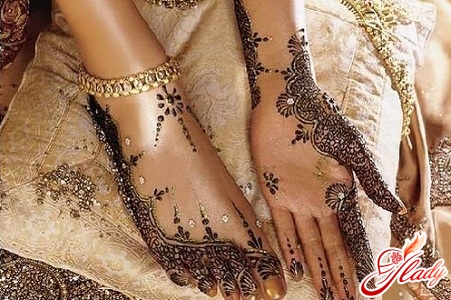
Choosing a place for henna tattoos
Often, a seemingly strange situation arisesThe question is, where is the best place to apply a henna design? The easiest way to do mehndi is on your palms. It is convenient, the color is richer, and the paint lasts longer. The pattern on the back of the hand and upper arm looks beautiful. A simple pattern on the wrists and ankles also fits in perfectly. But you should not make such tattoos on the chest or neck. Such a design lasts from 1 to 3 weeks, depending on the quality of the paint, and needs to be adjusted. It all depends on the place where the pattern is applied, for example, hands often come into contact with water and the paint is washed out. Go for it, maybe you will not succeed as well as you would like the first time, but a little practice and skill, and your drawings will attract attention and enchant with the beauty of the pattern!




